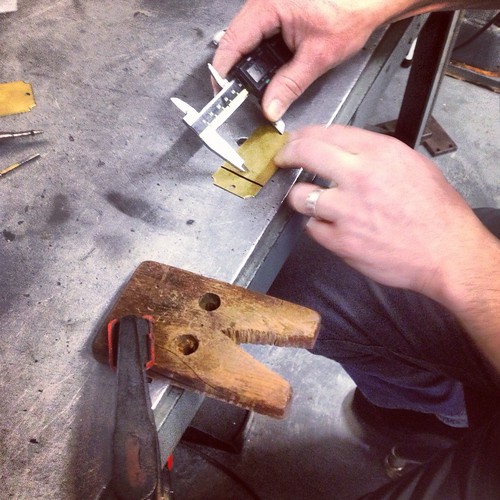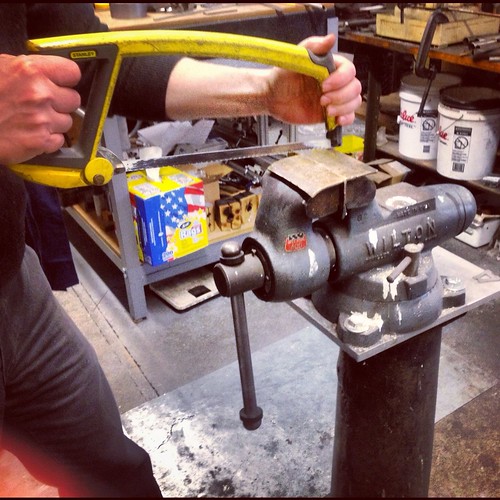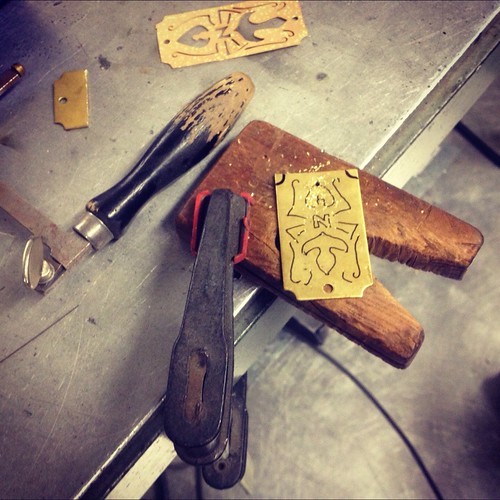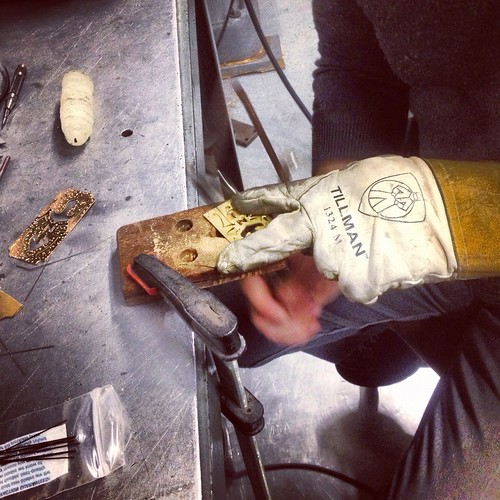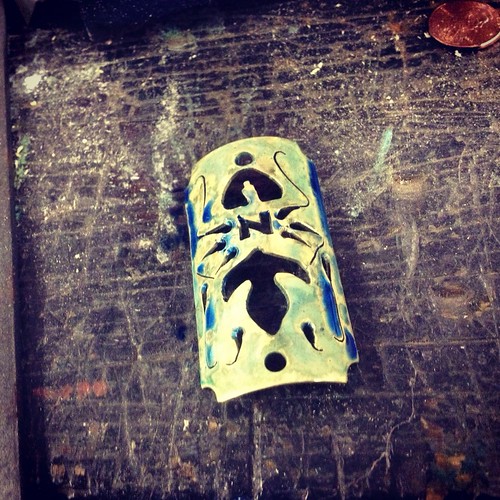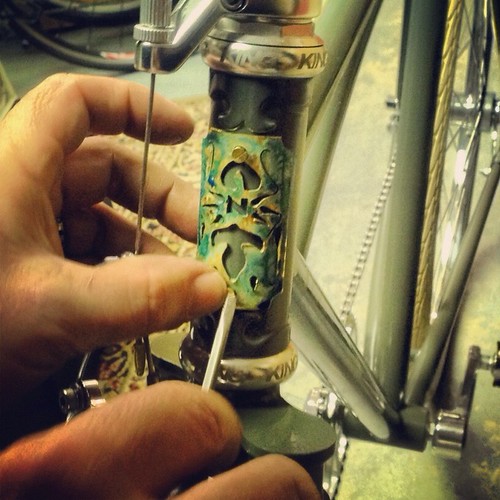
(Photo: Below the roof on the first pitch of Feast of Fools (5.10b).)
What a difference two weeks can make.
During Labor Day weekend I felt a little rusty and out of shape, trudging up climbs in a sticky summer stupor.
But this past Sunday was like another world. The weather was absolutely perfect and I felt almost like myself again.
I drove up early from NYC and picked Gail up at her house in Gardiner. We didn't have much of a plan. In the time since Labor Day I'd made it to the gym a few times. I felt okay, certainly better than when I got back from summer vacation, but I couldn't say I was back to climbing my best. Nevertheless the night before we met up I suggested to Gail that I might be game to check out one of the Gunks 5.10's on my list, like Feast of Fools (5.10b) or even 10,000 Restless Virgins (5.10d).
It's easy to be brave in an email.
When I got to Gail's house the temperatures were still in the 40's (!) but by the time we got to the cliff and hiked up the Stairmaster it had warmed up. I was comfortable all day in just a tee shirt with no jacket. On the carriage road we could see lots of people streaming into the Trapps, but when we got to the Arrow wall we found ourselves surprisingly alone.
What a fine situation to be in: we had glorious clear weather and some of the best moderate climbs in existence right in front of us, all of them empty. We decided to warm up with a few of routes on this wall. Gail led the first pitch of Arrow (this first pitch is 5.6) and then I led our next three pitches, knocking off the upper pitches of Arrow (5.8), Annie Oh! (5.8) and Three Doves (5.8+).
The combination of cool temperatures and the white, marble-like rock of the Arrow wall was magical. Chalk was almost unnecessary.
Arrow is always a pleasure, and the bolts make it a totally mellow experience.
I was curious about Annie Oh! because I hadn't been on the climb since the scary loose block in the middle of the pitch fell out last November. I can't say its absence has changed the climb much. As I climbed the pitch I wasn't even sure where the block had fallen out from. One somewhat scary feature remains on the pitch, a flake/overlap that seems to be attached but which rings quite hollow. There is an old fixed Alien underneath it. You need to place pro underneath and climb atop this feature to do the route; if it ever comes off it could be ugly. Despite this one concern
I love the second pitch of Annie Oh!; it has so many great moves on it, all the way to the very last one up a seemingly blank notch.
The top pitch of Three Doves is also fantastic. It is a step up in difficulty from Annie Oh! and it too has a strong hold on my affections. I love the delicate face moves to the roof and then the traverse right is exciting. I thought about moving left instead of right to finish through the 5.9+ ceiling of Hawkeye, just for a change, but it was only my second time on Three Doves and I was enjoying it so much I decided to carry on and finish it the regular way.
By the time we descended from Three Doves the wall had become very crowded. It seemed that every route suddenly had a party on it. (There was a leader on Annie Oh! climbing in bare feet!) We decided to return to the ground to see if Feast of Fools was available. I tried not to get my hopes up. I'd been looking to hop on Feast of Fools all year but because it has a bolted anchor atop its first pitch it always seems to have a huge group of top ropers hogging it. I assumed today would be no different, but who knew, I thought, we might get lucky.
It turned out no one was climbing Feast of Fools but there was a man at its base belaying his partner up the first pitch of Proctoscope (5.9+), around the corner. He said he was planning to lead Feast in a minute when his partner finished Proctoscope, but that if I wanted it now I could have it. His politeness overwhelmed me, so much so that I felt guilty about taking advantage.
Gail suggested I might like Proctoscope. (She'd been on it before.) I'd been curious about it, but it was not on my immediate tick list. I thought I had read that it was hard to protect. But when I looked up I could see that the man we were speaking with had several placements through the steep crux face. He had sewn it up. It looked quite safe. The climb would shortly be available. His partner appeared poised to finish up pretty soon.
I decided to give Proctoscope a try.
The first pitch is technical and challenging. The early going is easy, up a six-inch off-width that you can't protect without a Big Bro or some really big cams. But there are jugs in the off-width, so it really isn't a big deal. Once you get your first gear in, maybe twenty feet up, the pitch is very well protected from that point on. After the off-width you step left to a similarly easy chimney which leads to the business of the pitch, the steep orange face beneath a ceiling.
I really liked the steep orange face, and I did a good job on it.... until I didn't.
As of this writing there are two fixed pieces on the face, a piton right at the start, and later a fixed wire up near the ceiling, at the crux move. I clipped the piton and made the first thin, easy-does-it move upward. Then I plugged a cam in an obvious side-pull hold, being careful not to make the hold impossible to use. So far, so good. Gently stepping up again, I was already level with the fixed wire. It appeared I was one move away from a good hold, a jug up and left. If I could get up to that hold I might be done with the hard stuff. I'd just have to do a few easy moves up and left, skirting the ceiling and reaching the bolted anchor.
Only one thing stood between me and the onsight. The handholds were terrible. These are the "small, rounded holds" mentioned in Dick Williams' guidebook description for Proctoscope. I had a great foothold but I was barely holding on to a shallow crimp with my right hand. My left hand was on a sloper I considered basically useless. I was sure I'd fall if I released my right hand, so I carefully reached down with my left hand, got a draw and clipped the fixed nut. Then, feeling very tense and still gripping like mad with the right hand, I slowly clipped the rope to the draw.
Whew! Now I needed to move. I saw no good footholds, but I thought maybe I could step on this one indentation. I started to step up to grab the good shelf, but my toe slipped and whoosh, just like that, I was off. I had taken a fall on the fixed nut.
One move away from the jug. I was angry that I'd blown it. In my anger I rushed right back up there, got out of sequence and immediately fell again.
I recharged and tried to be more patient. And the third time it worked out. I didn't over-grip with the right hand, and I searched around to find a slightly better hold for the left. Once I found one I was able to bump up to the jug, and the difficulties were over.
This is a high quality pitch. I regret screwing it up. The fixed wire really helps. Placing your own gear there at the crux would increase the difficulty. It would be very tempting to just run it out to the next move.We were planning on doing the 5.8 pitch two of Proctoscope so I stayed at the bolts and brought Gail up. When I arrived the man we'd met earlier had finished with pitch one of Feast of Fools and had his rope up on the chains for the other people in his party. And while I was standing there another pair, two young women, rapped in from a tree on the GT ledge. They were hoping to set up their rope to top rope Feast after the other party finished. When Gail arrived we had four people and three ropes on this one anchor. it was kind of a mess, but it was just another Sunday in the Gunks.
We waited while the other pair at the anchor sorted out their plans and then I led pitch two. I liked it. It is worth doing at least once. It features a fun roof problem, directly above the belay. The roof is well-protected and there is another nice move to get established above the roof. After that it has easy and not very interesting climbing going left to avoid the larger ceiling and head up to the GT Ledge.
We took a quick look at the third pitch of Proctoscope, which diagonals up the huge arching corner just left of the upper pitch of Nurse's Aid. This 5.8 pitch trends left until it reaches the top of cliff right next to Arrow. It is not recommended by the guidebook. It looked not-so-awful to us, but Gail's husband Mitch came out to meet us as we finished pitch two-- he has just begun climbing again after a lengthy battle with a wrist injury-- so we rapped down from the Arrow bolts to meet him. The Arrow wall was still packed with people, which worked out to our benefit. Janette Pazer of the famous Family Climbing group was there with some friends. They had the first pitch of Annie Oh! set up and they kindly allowed Mitch and Gail to take a run up their rope.
While Mitch and Gail were over on Annie Oh!, I staked out the base of Feast of Fools. The young women with whom we'd shared the bolted belay station were almost done with the route. By the time they cleared out, Mitch was free for me. I was all set to go. Mitch belayed me for my onsight attempt on Feast of Fools.

(Photo: Confronting the starting moves on Feast of Fools (5.10b).)
I'd been excited about this pitch for a long time. It looks intimidating, with a big roof providing the first crux and a second crux at a small overhang and steep corner above. I'd made a point of never top-roping it, hoping to "save" it for the onsight. And now the time at last had come. But as I started up I found the first few moves to be surprisingly mysterious. The sun was soon to go behind the cliff, but at this moment it was beating down on me. I felt hot, for the first time all day. I was nervous. I wondered, "do I really want to do this?"
The answer: I did, in the worst way.
After a minute I settled down and made a move up, then soon found myself beneath the first roof, which is really a big pancake flake stuck in the cliff. I had thought this wouldn't be so bad, since you don't really pull the roof but rather go around it, escaping to the right.
But the holds underneath are tiny crimps and it felt very committing to reach out to the big flake. I placed an Alien in the corner and cowered there for a bit. Then I made a reach to the right (see the photo at the top of this post), because I thought I needed to move over there before grabbing the flake. And it was strenuous to hang out there. The holds were tiny. Placing another piece there would be difficult.
I retreated back to the corner, and asked Mitch if I was going the right way. Did I need to go out there to the right?
"I think you do," he replied. "And I think when you go for it and just grab the big flake it will all make sense and you'll feel fine."
But it didn't seem like it would feel fine. It felt awkward and scary. I moved out again, placing another Alien. Then I retreated again.
Then I finally went for it and it turned out Mitch was right. As soon as I reached out and grabbed the pancake flake everything was fine. Moving right was easy, and then I was over the roof in no time. Crux number one was done with.
The second crux of Feast of Fools is famous for being protected by two old pins. As I stood at the rest stance beneath the pins I could see that it appeared one of them had been replaced. It looked brand new. I was thrilled.
But when I tried to move up and clip the pins I found it very difficult. The stance there is very steep and the holds are poor.

(Photo: At the second crux on Feast of Fools, at the pins.)
The first time I went up to the pins, I couldn't find the draws on my harness. So I climbed back down and moved my stuff around. The second time I went up, it was all I could do to hang a draw on the pin. I was afraid I'd fall if I tried to attach the draw to the rope. So I retreated to the stance again. After resting a bit more I went back up and clipped the rope. Then I retreated once again, and repeated the whole process with the second pin. I climbed up and down at least four or five times.
I am grateful that Mitch and Gail are patient people. I really made this pitch into a lengthy process. But I didn't want to blow it. I was determined.
It was finally time to fire through the moves.
When I went for it I found out I had already done the hardest bit, four or five times. Hanging on at the pins is the crux! I had the moves to the pins all worked out now, and once I reached up above the pins, there were no problems. The holds improved and in just a few moves the pitch was over. It hadn't been all that pretty but I had my onsight of Feast of Fools. It felt good.
It is a really good pitch, with two nice cruxes. It seems to me the hardest parts are not the cruxes themselves, but rather placing protection for the cruxes. And at both cruxes you can hang in there, get the gear you need, and then take a step back to rest before moving on. In this way Feast of Fools is easier than Proctoscope. There was no way I was down-climbing to rest after clipping the fixed wire at the crux on Proctoscope. I had to keep climbing or take a fall.

(Photo: Gail making it look easy while following pitch one of Feast of Fools, at the pancake flake.)
It would have been nice to do pitch two of Feast of Fools-- it is supposed to be a really good 5.10a pitch-- but we'll have to come back for that. Mitch was heading out, and the anchor above pitch one was still in heavy use from multiple parties. We didn't really want to be stuck there in a traffic jam again.
Instead we went to do No Glow (5.9). Gail wanted a nice casual lead and the first pitch is 5.4. I was happy to do the second pitch, as it is a pretty mellow 5.9 that I've led before.

(Photo: Gail in the unprotected early going of No Glow.)
I enjoyed No Glow, as usual, but just below the top I got scared when I placed my hand on a feature, not realizing it was actually a detached block. This block is just two moves from the top, a little bit to the right as you come up. It is about three feet wide, and is Texas-shaped. When I barely touched this block it shifted. I really thought it might come off. It scared the crap out of me.

(Photo: Yes, that is the block. Photo stolen from Gunks.com.)
I was also a little bit more unnerved than usual by the sickle-shaped flake/block that sits above and to the right of the crux move. Everybody yards on this block to get over the crux. But it is just sitting on a tiny shelf. When we rapped down No Glow last Sunday I took a closer look at this sickle-shaped flake/block and I realized for the first time that only its left edge is sitting on the shelf. The right side is actually quite a bit wider than the shelf on which it sits and it's just hanging there in space.
I don't want to overreact. There are many loose blocks all over the place, and these particular features on No Glow have existed there for many years. No one has died yet. But twice this year in Yosemite climbers have died after loose blocks were pulled off of popular trade routes. Just because it hasn't happened yet doesn't mean we should ignore obvious risks. I think these two features on No Glow are ticking time bombs. I'm done with that route.
If you climb it, please don't touch that block near the top. (It is easily avoided.) I think just a little shove would send it right down the cliff.
Anyway, nothing bad happened so it didn't put too much of a damper on our wonderful day. I left the Gunks feeling thrilled to have gotten a 5.10 onsight for once. It was a great start to autumn. I hope this fall will be a real sending season.

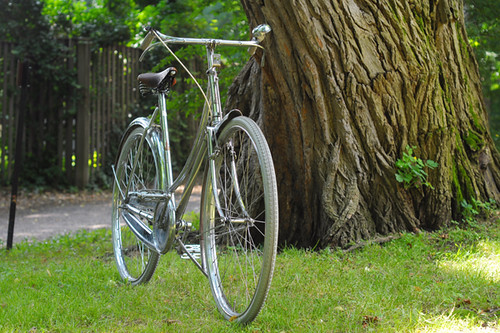
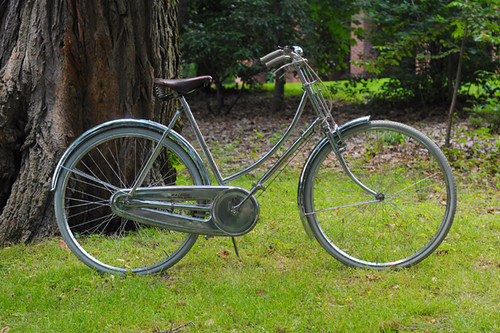
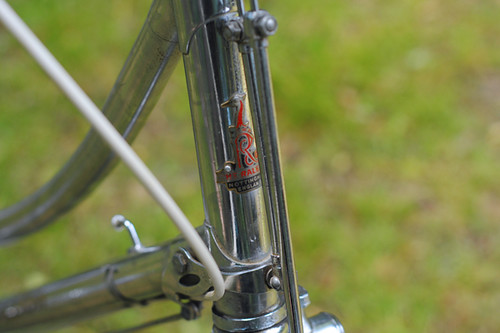

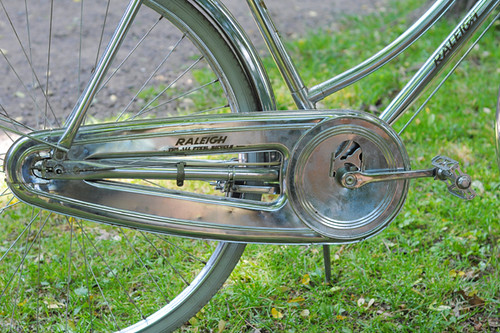

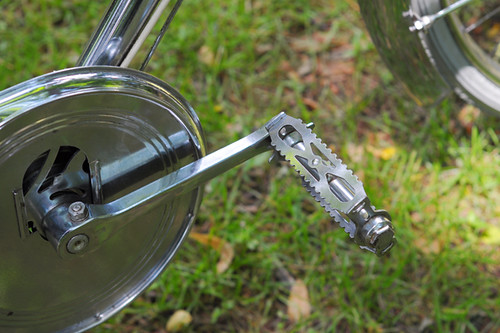


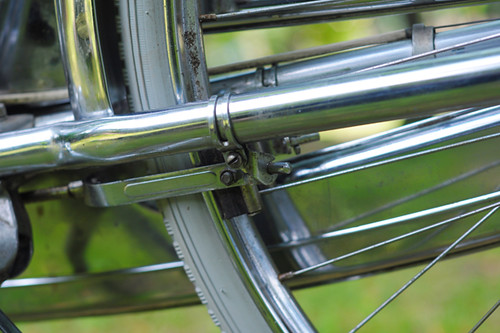

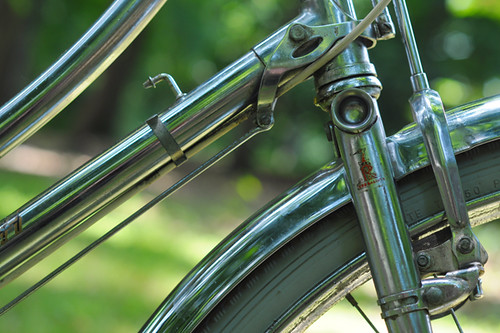

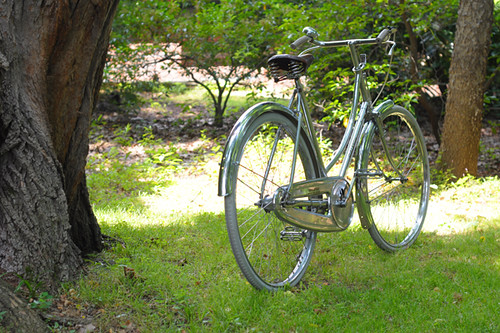








 Judging by my own experience and by those reported by other fledgling transportation cyclists, the phenomenon of the Starter Bike is fairly common. The Starter Bike gets acquired when the cyclist is just starting out, and is then replaced - usually between a couple of months and a year later - by a different bicycle that suits the rider better.
Judging by my own experience and by those reported by other fledgling transportation cyclists, the phenomenon of the Starter Bike is fairly common. The Starter Bike gets acquired when the cyclist is just starting out, and is then replaced - usually between a couple of months and a year later - by a different bicycle that suits the rider better. I was awestruck by its size and intensity of color, and we were still well over a mile away!
I was awestruck by its size and intensity of color, and we were still well over a mile away! A zoomed-in view of Sawyer Glacier.
A zoomed-in view of Sawyer Glacier. As we moved in closer we began to realize just how big this thing was. And we were all amazed by the amount of ice floating in the water.
As we moved in closer we began to realize just how big this thing was. And we were all amazed by the amount of ice floating in the water. A close-up of a portion of the face of the glacier. Note that the upper portion, or second tier level, is now hidden from our view.
A close-up of a portion of the face of the glacier. Note that the upper portion, or second tier level, is now hidden from our view. Of course, calving was what everyone wanted to see - and hear! Me too!
Of course, calving was what everyone wanted to see - and hear! Me too! But I was also enthralled by all of the ice that completely surrounded the boat. The ice was constantly on the move. Every time there was an event there was also a surge in the movement of the ice. When all was quiet you could hear the ice moving – each piece scraping against the other and making a crackling, tinkling sound.
But I was also enthralled by all of the ice that completely surrounded the boat. The ice was constantly on the move. Every time there was an event there was also a surge in the movement of the ice. When all was quiet you could hear the ice moving – each piece scraping against the other and making a crackling, tinkling sound. It wasn't a solid mass of ice but was made up of pieces of all different sizes.
It wasn't a solid mass of ice but was made up of pieces of all different sizes. When we first came into view of the glacier, Steve had told us to look for the seals laying on the ice. He had been in contact with two Rangers who were perched on the side of a cliff to the right of the glacier. Their task was to count the seals and at the time we arrived they had tallied more than 1,000 of them! They were everywhere, generally close to the perimeter of the cove.
When we first came into view of the glacier, Steve had told us to look for the seals laying on the ice. He had been in contact with two Rangers who were perched on the side of a cliff to the right of the glacier. Their task was to count the seals and at the time we arrived they had tallied more than 1,000 of them! They were everywhere, generally close to the perimeter of the cove. There wasn't a lot of movement on their part. One would occasionally lift up its head and look around but mostly they were just taking it easy.
There wasn't a lot of movement on their part. One would occasionally lift up its head and look around but mostly they were just taking it easy. The seals didn't seem to be bothered one bit when ice fell off of the glacier. They just rolled with the flow.
The seals didn't seem to be bothered one bit when ice fell off of the glacier. They just rolled with the flow. There was quite a bit of activity with the glacier. This was a fairly large event. You can see ice still cascading down while the spray from the big chunk that fell flies up in the air. We stayed at Sawyer Glacier for nearly two hours and by the end of that time, I was freezing! But I would have stayed longer if I could. It was impressive, exciting, exhilarating. Quite simply, fantastic!
There was quite a bit of activity with the glacier. This was a fairly large event. You can see ice still cascading down while the spray from the big chunk that fell flies up in the air. We stayed at Sawyer Glacier for nearly two hours and by the end of that time, I was freezing! But I would have stayed longer if I could. It was impressive, exciting, exhilarating. Quite simply, fantastic! Before we left, however, Captain Steve noticed a seal not too far away and maneuvered the boat closer to it. The seal lifted its head and looked at us. It made no attempt to leave its apparently comfortable perch on that bit of ice.
Before we left, however, Captain Steve noticed a seal not too far away and maneuvered the boat closer to it. The seal lifted its head and looked at us. It made no attempt to leave its apparently comfortable perch on that bit of ice. And with that sweet look, we departed Sawyer Glacier, exuberant and more than satisfied with the experiences of the day. But wait! There's more...
And with that sweet look, we departed Sawyer Glacier, exuberant and more than satisfied with the experiences of the day. But wait! There's more...
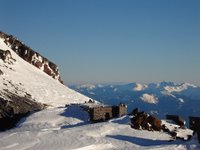 So far, the comments have been very positive; in particular, many expressed appreciation of the increased lighting.
So far, the comments have been very positive; in particular, many expressed appreciation of the increased lighting.
